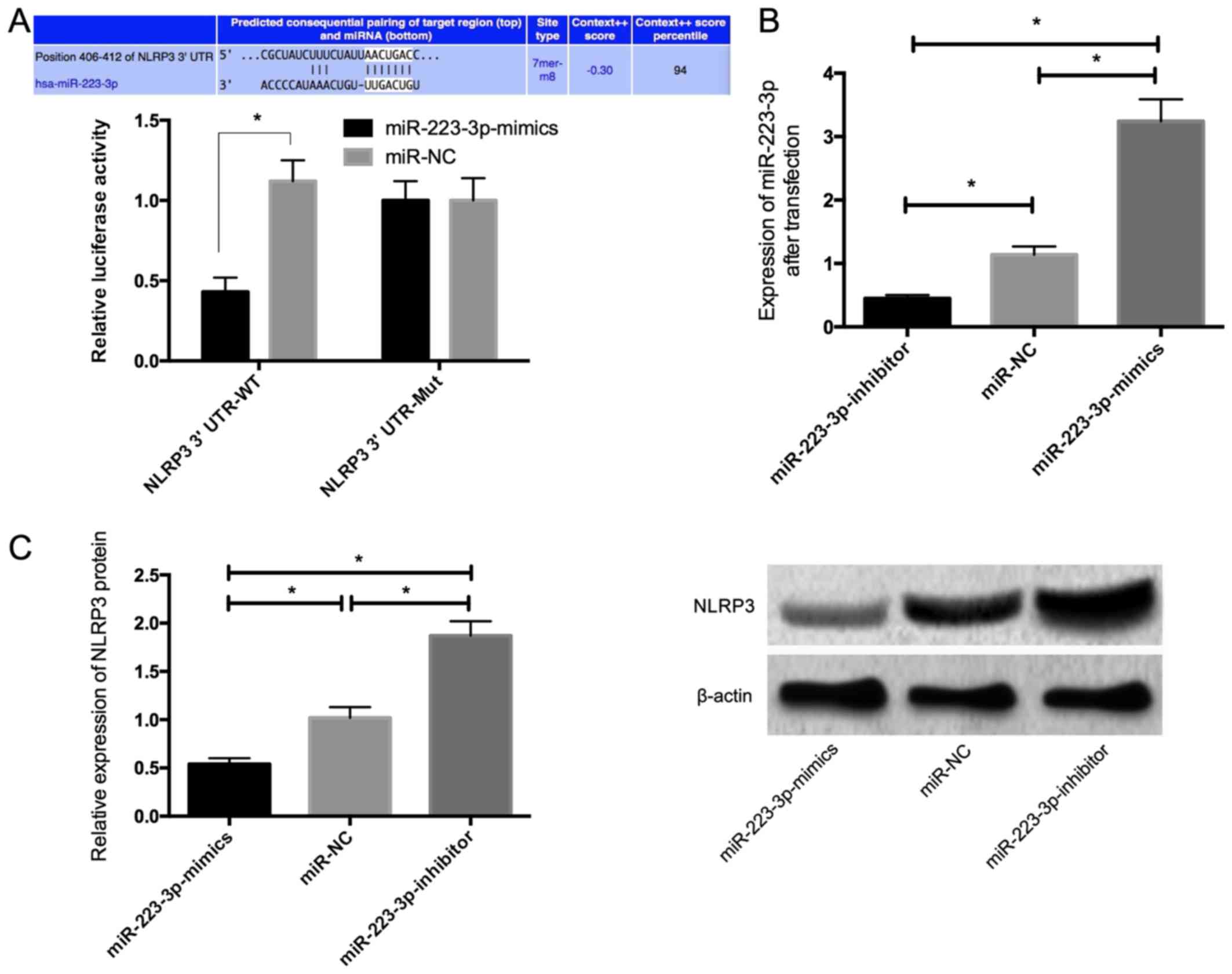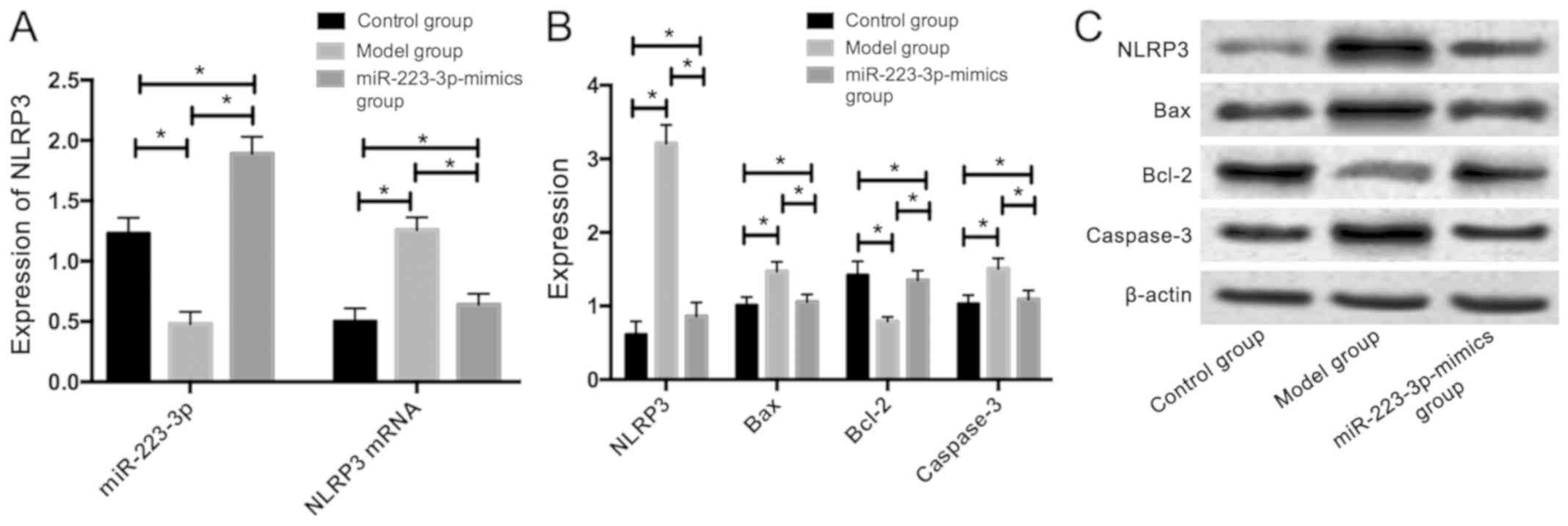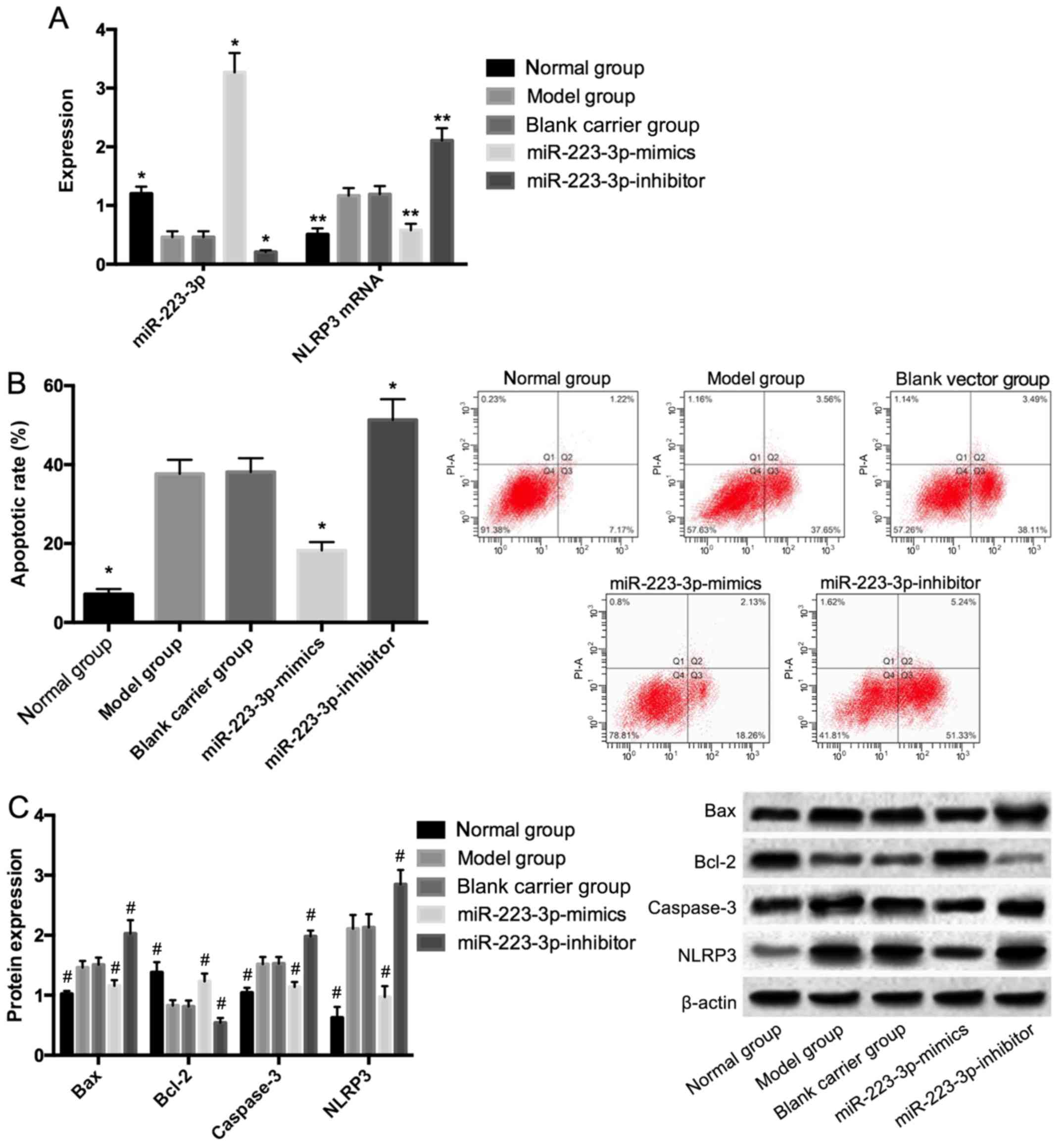|
1
|
Chamberlain JJ, Rhinehart AS, Shaefer CF
Jr and Neuman A: Diagnosis and management of diabetes: Synopsis of
the 2016 American Diabetes Association Standards of Medical Care in
Diabetes. Ann Intern Med. 164:542–552. 2016.PubMed/NCBI View
Article : Google Scholar
|
|
2
|
Micha R, Peñalvo JL, Cudhea F, Imamura F,
Rehm CD and Mozaffarian D: Association between dietary factors and
mortality from heart disease, stroke, and type 2 diabetes in the
United States. JAMA. 317:912–924. 2017.PubMed/NCBI View Article : Google Scholar
|
|
3
|
Zhao W, Rasheed A, Tikkanen E, Lee JJ,
Butterworth AS, Howson JMM, Assimes TL, Chowdhury R, Orho-Melander
M, Damrauer S, et al: CHD Exome+ Consortium; EPIC-CVD Consortium;
EPIC-Interact Consortium; Michigan Biobank: Identification of new
susceptibility loci for type 2 diabetes and shared etiological
pathways with coronary heart disease. Nat Genet. 49:1450–1457.
2017.PubMed/NCBI View
Article : Google Scholar
|
|
4
|
Parenti A, Pala L, Paccosi S and Rotella
CM: Potential role for dendritic cells in endothelial dysfunction,
diabetes and cardiovascular disease. Curr Pharm Des. 23:1435–1444.
2017.PubMed/NCBI View Article : Google Scholar
|
|
5
|
Rawal S, Munasinghe PE, Shindikar A,
Paulin J, Cameron V, Manning P, Williams MJ, Jones GT, Bunton R,
Galvin I, et al: Down-regulation of proangiogenic microRNA-126 and
microRNA-132 are early modulators of diabetic cardiac
microangiopathy. Cardiovasc Res. 113:90–101. 2017.PubMed/NCBI View Article : Google Scholar
|
|
6
|
Dai GH, Ma PZ, Song XB, Liu N, Zhang T and
Wu B: MicroRNA-223-3p inhibits the angiogenesis of ischemic cardiac
microvascular endothelial cells via affecting RPS6KB1/hif-1a signal
pathway. PLoS One. 9(e108468)2014.PubMed/NCBI View Article : Google Scholar
|
|
7
|
Liu X, Zhang Y, Du W, Liang H, He H, Zhang
L, Pan Z, Li X, Xu C, Zhou Y, et al: MiR-223-3p as a novel microRNA
regulator of expression of voltage-gated K+ channel
Kv4.2 in acute myocardial infarction. Cell Physiol Biochem.
39:102–114. 2016.PubMed/NCBI View Article : Google Scholar
|
|
8
|
Wang X, Huang W, Yang Y, Wang Y, Peng T,
Chang J, Caldwell CC, Zingarelli B and Fan GC: Loss of duplex
miR-223 (5p and 3p) aggravates myocardial depression and mortality
in polymicrobial sepsis. Biochim Biophys Acta. 1842:701–711.
2014.PubMed/NCBI View Article : Google Scholar
|
|
9
|
Yi H, Peng R, Zhang LY, Sun Y, Peng HM,
Liu HD, Yu LJ, Li AL, Zhang YJ, Jiang WH, et al: LincRNA-Gm4419
knockdown ameliorates NF-κB/NLRP3 inflammasome-mediated
inflammation in diabetic nephropathy. Cell Death Dis.
8(e2583)2017.PubMed/NCBI View Article : Google Scholar
|
|
10
|
Stienstra R, van Diepen JA, Tack CJ, Zaki
MH, van de Veerdonk FL, Perera D, Neale GA, Hooiveld GJ, Hijmans A,
Vroegrijk I, et al: Inflammasome is a central player in the
induction of obesity and insulin resistance. Proc Natl Acad Sci
USA. 108:15324–15329. 2011.PubMed/NCBI View Article : Google Scholar
|
|
11
|
Wang L, Chen Y, Li X and Zhang Y, Gulbins
E and Zhang Y: Enhancement of endothelial permeability by free
fatty acid through lysosomal cathepsin B-mediated Nlrp3
inflammasome activation. Oncotarget. 7:73229–73241. 2016.PubMed/NCBI View Article : Google Scholar
|
|
12
|
Zhou W, Wang G, Zhao X, Xiong F, Zhou S,
Peng J, Cheng Y, Xu S and Xu X: A multiplex qPCR gene dosage assay
for rapid genotyping and large-scale population screening for
deletional α-thalassemia. J Mol Diagn. 5:642–651. 2013.PubMed/NCBI View Article : Google Scholar
|
|
13
|
Soliman EZ, Backlund JC, Bebu I, Orchard
TJ, Zinman B and Lachin JM: DCCT/EDIC Research Group.
Electrocardiographic abnormalities and cardiovascular disease risk
in type 1 diabetes: The Epidemiology of Diabetes Interventions and
Complications (EDIC) Study. Diabetes Care. 40:793–799.
2017.PubMed/NCBI View Article : Google Scholar
|
|
14
|
Trikkalinou A, Papazafiropoulou AK and
Melidonis A: Type 2 diabetes and quality of life. World J Diabetes.
8:120–129. 2017.PubMed/NCBI View Article : Google Scholar
|
|
15
|
Cai H, Li G, Zhang P, Xu D and Chen L:
Effect of exercise on the quality of life in type 2 diabetes
mellitus: A systematic review. Qual Life Res. 26:515–530.
2017.PubMed/NCBI View Article : Google Scholar
|
|
16
|
Guo R and Nair S: Role of microRNA in
diabetic cardiomyopathy: From mechanism to intervention. Biochim
Biophys Acta Mol Basis Dis. 1863:2070–2077. 2017.PubMed/NCBI View Article : Google Scholar
|
|
17
|
Ye Y, Bajaj M, Yang HC, Perez-Polo JR and
Birnbaum Y: SGLT-2 inhibition with dapagliflozin reduces the
activation of the Nlrp3/ASC inflammasome and attenuates the
development of diabetic cardiomyopathy in mice with type 2
diabetes. Further augmentation of the effects with saxagliptin, a
DPP4 inhibitor. Cardiovasc Drugs Ther. 31:119–132. 2017.PubMed/NCBI View Article : Google Scholar
|
|
18
|
Yang X, Lu F, Li L, Li J, Luo J, Zhang S,
Liu X and Chen G: Wu-Mei-wan protects pancreatic β cells by
inhibiting NLRP3 inflammasome activation in diabetic mice. BMC
Complement Altern Med. 19(35)2019.PubMed/NCBI View Article : Google Scholar
|
|
19
|
Liu Y, Lian K, Zhang L, Wang R, Yi F, Gao
C, Xin C, Zhu D, Li Y, Yan W, et al: TXNIP mediates NLRP3
inflammasome activation in cardiac microvascular endothelial cells
as a novel mechanism in myocardial ischemia/reperfusion injury.
Basic Res Cardiol. 109(415)2014.PubMed/NCBI View Article : Google Scholar
|
|
20
|
Chu M, Wu R, Qin S, Hua W, Shan Z, Rong X,
Zeng J, Hong L, Sun Y, Liu Y, et al: Bone marrow-derived
microRNA-223 works as an endocrine genetic signal in vascular
endothelial cells and participates in vascular injury from Kawasaki
disease. J Am Heart Assoc. 6(e004878)2017.PubMed/NCBI View Article : Google Scholar
|
|
21
|
Zhang J, Xia L, Zhang F, Zhu D, Xin C,
Wang H, Zhang F, Guo X, Lee Y, Zhang L, et al: A novel mechanism of
diabetic vascular endothelial dysfunction:
Hypoadiponectinemia-induced NLRP3 inflammasome activation. Biochim
Biophys Acta Mol Basis Dis. 1863:1556–1567. 2017.PubMed/NCBI View Article : Google Scholar
|
|
22
|
Castro-Villegas C, Pérez-Sánchez C,
Escudero A, Filipescu I, Verdu M, Ruiz-Limón P, Aguirre MA,
Jiménez-Gomez Y, Font P, Rodriguez-Ariza A, et al: Circulating
miRNAs as biomarkers of therapy effectiveness in rheumatoid
arthritis patients treated with anti-TNFα. Arthritis Res Ther.
17(49)2015.PubMed/NCBI View Article : Google Scholar
|
|
23
|
Akushevich I, Yashkin AP, Kravchenko J,
Fang F, Arbeev K, Sloan F and Yashin AI: Identifying the causes of
the changes in the prevalence patterns of diabetes in older U.S.
adults: A new trend partitioning approach. J Diabetes
Complications. 32:362–367. 2018.PubMed/NCBI View Article : Google Scholar
|
|
24
|
Patterson R, McNamara E, Tainio M, de Sá
TH, Smith AD, Sharp SJ, Edwards P, Woodcock J, Brage S and
Wijndaele K: Sedentary behaviour and risk of all-cause,
cardiovascular and cancer mortality, and incident type 2 diabetes:
A systematic review and dose response meta-analysis. Eur J
Epidemiol. 33:811–829. 2018.PubMed/NCBI View Article : Google Scholar
|
|
25
|
Kowluru RA, Kowluru V, Xiong Y and Ho YS:
Overexpression of mitochondrial superoxide dismutase in mice
protects the retina from diabetes-induced oxidative stress. Free
Radic Biol Med. 41:1191–1196. 2006.PubMed/NCBI View Article : Google Scholar
|

















